The Latest from Boing Boing |  |
- Monster Kid Home Movies: DVD of monster movies made by kids from the 1950s-1980s
- Giant and awesome dice-rolling machine
- Lampshade made from many toothpicks
- Nose balloons for snot-headed kids
- Rare form of amnesia involves inventing continuous stream of fictitious events
- Android apps coming to Ubuntu
- Skeletal photoshopping contest
- Tiny knitted meerkats in Star Trek uniforms
- Cocaine found in Red Bull Cola?
- Laser-cut gingerbread bridge
- Zombie haiku contest -- best entry wins the game of Plants vs. Zombies
- State of the Hispanic Blogosphere report 2009
- Ad Boy - a book about vintage advertising characters
- Guatemala: Accidental Snapshot
- Prop Hate
- Fear And Loathing: The Board Game
- Wolfram|Alpha is Live
- Guatemala: Mayan Activists Protest Dirty Deeds of a Canadian Mining Giant
- Europeans: vote for free software in upcoming election
- Canadian think-tank that spent tax-dollars plagiarizing US copyright lobby press-materials ignored its own expert's conflicting research
- Itzbeen baby-timer remembers four important childcare facts
- Frankenwatch!
- Nancy, Volume One (John Stanley Library)
- Mars in Crayon -- Boing Boing Gadgets
- Depression 2.0: Creative Strategies for Tough Economic Times
- Life Inc: a book against corporatism, published by a corporation
- COOP painting show in Culver City
- Mouse Guard: kid-friendly RPG where you get to play a mouse with a sword!
- Documentary about hardware hackers
- Arm sconce
| Monster Kid Home Movies: DVD of monster movies made by kids from the 1950s-1980s Posted: 22 May 2009 11:36 AM PDT One of the most exciting revelations in the book Homemade Hollywood was the news of the existence of Monster Kid Home Movies, a two-hour 2005DVD of kid-made monster movies from the 1950s to the 1980s, transferred from streaky old film-stock. I sent away for a review copy of the disc and it's been my captivating evening viewing for two nights now. Monster Kid Home Movies is an utterly exuberant celebration of monster-obsessed amateur creativity, and the films are filled with raw enthusiasm for the genre. These are Forry Ackerman's spiritual progeny at their most ingenious, contriving incredible costumes, ill-advised stunts, clever camera work, and often hilarious hamming to recreate the famous monsters of filmland. The DVD's extras are great as well -- bios and production stills from the films, which are organized by creator. Some of these kids went on to have real Hollywood careers, others didn't, but they all made glorious monster movies in their day. |
| Giant and awesome dice-rolling machine Posted: 27 May 2009 05:27 AM PDT The Dice-O-Matic is a giant rube-goldberg random number generator used on Games-By-Email in lieu of a cheaper, less-physical, less-cool software dice-roller. The Dice-O-Matic is 7 feet tall, 18 inches wide and 18 inches deep. It has an aluminum frame covered with Plexiglas panels. A 6x4 inch square Plexiglas tube runs vertically up the middle almost the entire height. Inside this tube a bucket elevator carries dice from a hopper at the bottom, past a camera, and tosses them onto a ramp at the top. The ramp spirals down between the tube and the outer walls. The camera and synchronizing disk are near the top, the computer, relay board, elevator motor and power supplies are at the bottom.As Schneier notes, "As someone who has designed random number generators professionally, I find this to be an overly complex hardware solution to a relatively straightforward software problem. But the sheer beauty of the machine cannot be denied." Previously:
|
| Lampshade made from many toothpicks Posted: 26 May 2009 11:06 PM PDT  Daisuke Hiraiwa's "Stamen" lampshade is made from bazillions of toothpicks (12,500 or so). He makes complementary "Petal" lampshades from plastic spoons. stamen and petals at ICFF 2009 (via Craft) Previously: |
| Nose balloons for snot-headed kids Posted: 26 May 2009 10:17 PM PDT Kids with extremely snotty heads can be trained to clear their sinuses by teaching them to inflate "nose balloons": Nose Balloon |
| Rare form of amnesia involves inventing continuous stream of fictitious events Posted: 26 May 2009 10:15 PM PDT On the Neurophilosophy blog, a fascinating look at confabulatory hypermnesia, a rare disorder in which people with various kinds of amnesia (including amnesia resulting from alcoholism and Vitamin B1 deficiencies) invent a continuous stream of detailed, fictitious events to fill in the gaps in their memory. The write up comes from a paper published in the journal Cortex: Most strikingly, LM confabulated plausible answers to questions about both his personal life and public events, which would normally elicit from most people an answer of "I don't know". When the researchers asked him "Who won the Palme d'Or at the Cannes Film Festival in 1980?" he replied "Fernandel"; when asked what he had for dinner on Tuesday two weeks ago, he answered "Steak with french fries"; and when asked "Do you remember what you did on March 13th, 1985?" he replied "We spent the day at the Senart Forest."Confabulatory hypermnesia, or severe false memory syndrome Previously: |
| Posted: 26 May 2009 09:59 PM PDT Canonical, the folks who maintain the Ubuntu flavor of the GNU/Linux operating system, have demoed code that lets you run apps from Android phones and devices (like Google's G1) on your desktop. Given that I'm a G1 user and an Ubuntu user, this is good news! Google's Linux-based Android platform is attracting a lot of attention. The new version significantly improves the platform's reliability and could make it look a lot more appealing to carriers and handset makers. The availability of an experimental x86 port has caused some people to speculate that Android might have a place in the netbook market.Canonical developers aim to make Android apps run on Ubuntu |
| Skeletal photoshopping contest Posted: 26 May 2009 09:56 PM PDT |
| Tiny knitted meerkats in Star Trek uniforms Posted: 26 May 2009 09:54 PM PDT  Dawn sez, "Etsy crafter has created tiny knitted meercats in TOS uniforms - including one "he's dead" redshirt and, I assume, Kirk and Bones, who has a tiny bead med-scanner." Star Trek Meerkat Bones McCoy Original Series (Thanks, Dawn!) |
| Cocaine found in Red Bull Cola? Posted: 26 May 2009 08:52 PM PDT Six German states have banned Red Bull Cola after lab tests turned up trace amounts of coca leaf extracts in the beverage. According to authorities, the substance requires the beverage to be classified as a narcotic, requiring a license for sale. (Of course, even Coca-Cola didn't become entirely cocaine-free until 1929.) From BBC News: (Red Bull) said coca leaf extracts were used worldwide as a natural flavouring, and that its own tests had found no traces of cocaine."Germany bans cola after drug test" Previously: |
| Posted: 26 May 2009 04:54 PM PDT  Today is Bridge day over at Boing Boing Gadgets. Steve Leckart found this laser-cut gingerbread bridge, still under construction. |
| Zombie haiku contest -- best entry wins the game of Plants vs. Zombies Posted: 26 May 2009 04:11 PM PDT  Plants vs. Zombies continues to fascinate three out of the four members of our household. To share the love, I'm giving away this Plants vs. Zombies gift card. I won't send you the actual card, though. Instead I'll send you another photo of this card without the dry roasted edamame beans that cover up the code you need to enter to unlock the game for unlimited play. How do you win? By writing the best zombie-themed haiku in the comments. Deadline is 2am Pacific Time. You can download a one-hour trial of the game here. |
| State of the Hispanic Blogosphere report 2009 Posted: 26 May 2009 03:58 PM PDT  "Globally, half of the overall bloggers are from Spain, being Argentina, Mexico and Chile the following most active countries in number of bloggers in the Hispanic world." David Alayon, Community Manager at Bitacoras.com sent me a link to the English version of this report on the Hispanic Blogosphere. Since its huge emergence in the late XX century and the beginning of the XXI century, many have been the studies that have attempted to approach to the blog phenomenon in Spanish.State of the Hispanic Blogosphere report 2009 |
| Ad Boy - a book about vintage advertising characters Posted: 26 May 2009 03:53 PM PDT  Warren Dotz let me know about a new book he co-wrote called AD BOY: Vintage Advertising with Character. I haven't see the book yet, but I've enjoyed Warren's other books More than 450 American ad characters, industry icons, and product personalities hailing from the 1950s, '60s, and '70s pack the pages of this vibrant, vintage collection.AD BOY: Vintage Advertising with Character |
| Guatemala: Accidental Snapshot Posted: 26 May 2009 08:24 PM PDT  (I'm traveling and blogging from Guatemala right now, so expect a number of posts from me specific to this region. - XJ). I've spent much of the past week in a K'iche' Maya village in the highlands. One of the children there took this snapshot on my iPhone by accident, I'm pretty sure. I love it. We were gathered around the wood hearth, trying to stay warm. I was watching the women of the household slap tortillas from corn grown in the nearby milpa. I'd offered the kids my iPhone -- a foreign, seemingly magical device (their dad described it in those words, anyway). I was showing them how to play around with some apps. I didn't actually show much, they figured things out on their own. Their favorite apps, btw, were: Eno's "Bloom," and "Koi Pond" (Which I learned would be called "Uk'ob'al Kar" in the Kiche' language, that's how you'd say "small pond full of fish.") I'm blogging the photo because -- I don't know. I loved the composition, the dreamy-floaty quality. It reminds me of a painting I saw in a famous person's home in LA a few weeks before I left the USA. I like it a lot more than most of the "real" photos I've "deliberately" taken on this trip with "good" cameras (yes, I love over-using quote marks). Sometimes accidents, or chance creations in the hands of children, are better than things we might choose or control. I'm heading back to the pueblo shortly, but here is another phone-snap of where I'm sitting and typing now. Guatemala is extreme beauty, and extreme suffering.
Previously:
|
| Posted: 26 May 2009 01:56 PM PDT Today a California court upheld a ban on marriages between persons of the same gender, because nothing harms society (and kids) like two people who love each other committing to a lifelong relationship based on care, compassion, and mutual responsibility. My friend Ehrich Blackhound says, "I've replaced the header on the Prop 8 website with this graphic, using @shiftspace. download the plugin to see it in situ." And Meadhbh Siobhan says, mi amiga riven will be liveblogging the santa cruz prop 8 protests this evening. she encourages people to follow her twitter feed at @rivensharp and asks that if you're going to be live blogging the protest in your area that you send her a direct message with your twitter id. i think the idea here is that peeps at the protests can communicate with each other via twitter. or.. if you're just interested in watching the feed, you can see that here.If you'd like to share news of other PropHate-related actions taking place today, please pile on in the comments. |
| Fear And Loathing: The Board Game Posted: 26 May 2009 02:09 PM PDT 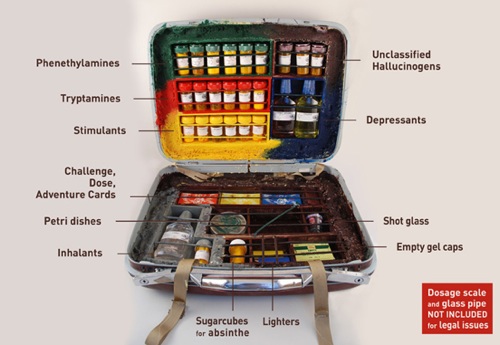 Designer Jonathan Baldwin created a very limited edition board game based on Hunter S. Thompson's Fear And Loathing In Las Vegas. The package looks fantastic. "Pill bottle contents mimic look of real substances." Fear And Loathing: The Board Game (Thanks, Tara McGinley!) |
| Posted: 26 May 2009 01:32 PM PDT (Rudy Rucker is a guestblogger. His latest novel, Hylozoic, describes a postsingular world in which everything is alive.) Six weeks ago, I interviewed Stephen Wolfram about his intriguing new online tool Wolfram|Alpha. And now Wolfram|Alpha is live. Give it a try...it's not exactly a browser, it computes facts and images based on the browser data that it retrieves, and presents the new info on web pages it designs on the fly.
If a word isn't in the Wolfram|Alpha database---like the word "Boing"---the answer you get may be a bit of a surprise. But the expectation is that over time Wolfram|Alpha's abilities will grow. |
| Guatemala: Mayan Activists Protest Dirty Deeds of a Canadian Mining Giant Posted: 26 May 2009 01:59 PM PDT (I'm traveling and blogging from Guatemala right now, so expect a number of posts from me specific to this region. - XJ). The excellent work of Guatemala-based photojournalist James Rodriguez has been featured on BB a number of times before. The most recent photo-essay on his blog documents a protest march that took place a few days ago in the capital here, carried out by indigenous people from San Miguel Ixtahuacan, where the Canadian mining giant Goldcorp operates the Marlin Gold Mine. Background here on the mine, and Goldcorp's campaign of harassment and intimidation of indigenous residents. Snip: The movement, made up almost in its entirety by indigenous local Mam Mayans, reiterated their intention to pursue a peaceful dialogue so as to bring to a close Montana's mining activities in the region. As of now, three people have died due to the toxic contamination in the local water sources and other natural resources.San Miguel Ixtahuacan is Waking Up: Guatemala City, Guatemala. (mimundo.org) Previously: |
| Europeans: vote for free software in upcoming election Posted: 26 May 2009 11:48 AM PDT James sez, "In the coming European Parliament Elections voters have a chance to influence the wider use and the development of free software across Europe by lobbying potential candidates. Already about 90 MEP candidates are supporting this." The Free Software Pact is a simple document with which candidates can inform the voting public that they favor the development and use of Free Software, and will protect it from possible threatening EU legislation. The Free Software Pact is also a tool for citizens who value Free Software to educate candidates about the importance of Free Software and why they should, if elected, protect the European Free Software community.Free Software Pact |
| Posted: 26 May 2009 11:45 AM PDT The Conference Board of Canada -- a supposedly independent think tank that took Canadian tax-money to produce a report on the "Digital Economy" that plagiarized press-materials from the US copyright lobby -- ignored conflicting evidence that an independent legal expert produced after they paid him to investigate the subject. In other words, they went into this project knowing what conclusions they wanted to draw, and ignored everyone -- even their own researchers -- who had anything different to say. What the Conference Board does not mention in its defence (nor in the report) is that it actually commissioned a study on the copyright issues from an independent Canadian legal expert. That report was completed by Professor Jeremy deBeer, a colleague at the University of Ottawa and frequent contributor to the Globe and Mail on copyright matters.Conference Board Ignored Independent Study Commissioned For Digital Economy Report Previously: |
| Itzbeen baby-timer remembers four important childcare facts Posted: 26 May 2009 11:40 AM PDT I like the look of the ITZBEEN: a four-way baby-care timer that helps sleep-depped parents remember exactly when the little pisher last had a little pish: Itzbeen Baby Care Timer (Thanks, William!) |
| Posted: 26 May 2009 11:22 AM PDT  Diesel's new "Freak of Nature" frankenwatch fuses "a steel oval case with a gold square surrounding a split-faced multi-colored chronograph dial" -- it's even got two different watch-band halves! Diesel's new "Freak of Nature" frankenwatch fuses "a steel oval case with a gold square surrounding a split-faced multi-colored chronograph dial" -- it's even got two different watch-band halves! |
| Nancy, Volume One (John Stanley Library) Posted: 26 May 2009 01:26 PM PDT  As I've said before, we are big Little Lulu fans around my house. I read the comic anthologies to my kids all the time. Even though the stories are 50 years old, they're fun and fresh and the characters -- Lulu, Tubby, and Alvin -- behave like real kids. (Dark Horse has published the complete run of John Stanley's Little Lulu series as reasonably priced paperback anthologies. Vol 1, Vol 2, Vol 3, Vol 4, Vol 5, Vol 6, Vol 7, Vol 8, Vol 9, Vol 10, Vol 11, Vol 12, Vol 13, Vol 14, Vol 15, Vol 16, Vol 17, Vol 18) The main writer of Little Lulu was John Stanley. He also wrote a number of other comics, but I've seen just a few, because they're hard to come by. Drawn & Quarterly has corrected that problem by launching the John Stanley Library. The second book in the series is Nancy, Volume One. Created by Ernie Bushmiller, the beloved Brillo-headed Nancy starred in her own comic book series for years, written by arguably the greatest children’s comics writer of all time, John Stanley. Most famous for scripting the adventures of Marjorie Henderson Buell’s Little Lulu, John Stanley is one of comics’ secret geniuses. He provided a visual rough draft for all the comics he wrote and then handed off these “scripts” for someone else to render the finished art. No matter what comic he was writing, he breathed life into his characters. In Stanley’s comics, Nancy is no longer a crabby cipher but a hilarious, brilliant, scheming, duplicitous, honest, and loyal little kid—a real little kid. Her adventures with her best friend, the comically destitute Sluggo, involve moneymaking schemes to afford ice-cream sodas, botched trips to the corner store for Nancy’s Aunt Fritzi, and comically raucous attempts to remove loose teeth.Nancy, Volume One |
| Mars in Crayon -- Boing Boing Gadgets Posted: 26 May 2009 10:01 AM PDT On BBG: the amazing story of how color images of Mars emerged in crayon: Mars in Crayon |
| Depression 2.0: Creative Strategies for Tough Economic Times Posted: 26 May 2009 09:44 AM PDT Depression 2.0: Creative Strategies for Tough Economic Times is part of the same series of Process books that includes The Urban Homestead, Preparedness Now! An Emergency Survival Guide for Civilians and Their Families, and Getting Out: Your Guide to Leaving America. Depression 2.0: Creative Strategies for Tough Economic Times |
| Life Inc: a book against corporatism, published by a corporation Posted: 26 May 2009 10:01 AM PDT 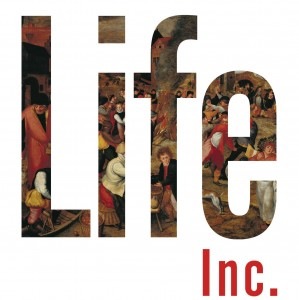 (Douglas Rushkoff is a recent Boing Boing guest blogger -- below, a previously-planned excerpt from his new book, the last in a series of excerpts which ran during his guest-blogging period.) Here's the final excerpts for the BoingBoing serialization of my new book Life Inc: How the world became a corporation and how to take it back. I've chosen them in response to concern from readers of the earlier excerpts, who are asking "what should we actually do about all this?" I think the first step is to fully comprehend how the financial mess we're in is not some aberration, but the culmination of a debt-based economy. When speculation and lending outweigh innovation and value-creation as drivers of economic activity, addiction to growth and the attendant bubbles are really the only possible long-term outcome. That's why it's important we understand how the ground rules were established, who came up with them, and why. Only then can we begin to look at how arbitrarily they were determined, and how artificially they were upheld. But once we've done that, we need to look at mechanisms for restoring the functioning of a bottom-up economy that is at least as worthy as its top-down counterpart. Corporate foundations, while well-meaning, end up sitting on giant stores of investment that work against the very causes the foundations are supposedly working to fix. (There's a big section on how this works, using some of the LA Times terrific analysis of how the Gates Foundation invests its assets.) It's not a matter of getting rid of corporations and centralized currency altogether, but maintaining alternative means of creating value and exchanging it. This is as much about simple participation as it is about active legislation. Finally, I'll argue, it means abandoning "causes" as abstract as the entities for which we mean to develop alternatives. (for more on the book, movie, and tour, as well as appearances for groups such as A New Way Forward, check out lifeincorporated.net ) From Chapter 8 No Returns The Fourth Estate is made up almost entirely of large corporations. And, operating almost entirely under the principles of debt, media companies cannot make any distinction between the market value of information and its importance. Britney Spears's latest breakdown and the invasion of Iraq are both treated as major media events deserving of equal time and space. In the face of all this, the hippest way out is to adopt the attitude of amused and quizzical cynicism worn by Stephen Colbert and Jon Stewart. Besides, no matter how critical of corporatism some entertainers and journalists might be, the impact of their arguments is undercut by their dependence on corporatized media for dissemination. Stephen Colbert and Jon Stewart work for Viacom. Naomi Klein writes for a division of the German publisher Verlagsgruppe, and this book is published by a subsidiary of Bertelsmann. We all have mortgages to pay. Even most progressive journalism--just like the kind that emerged in the early 1900s--tends to frighten and isolate the middle classes rather than bring them out of their homes to improve their communities. Populists such as CNN's Lou Dobbs, and others speaking out on behalf of working stiffs, stoke more rage and discontent than thoughtful engagement. In the isolation of our living rooms and surrounded by bills, the menaces of immigrants willing to take our jobs for less pay and affirmative- action candidates offered our jobs with fewer qualifications feel all too real. Experiencing all this through the sensationalist lens of Big Media only reduces our connection to the real world in which all this stuff is supposedly occurring. We seek to take on our institutional enemies vicariously through our late- night comedians, or "directly" through our laptops. We get to enter contests through which we can compete to create the most effective video ad for an issue or a candidate. We can make viral documentaries that no matter how painstakingly researched they are end up indistinguishable from paranoid videos about how preset explosives took down the World Trade Center. The problem with fighting "Big Blank" [Big Agra, Big Pharma, etc.] on its own turf and terms is that it has more money, more access to the government and media through which the battle takes place, better command of the symbols and semantics that sway public sentiment, and much more time to spend waiting for the results it wants. Real people working against it, on the other hand, need to keep alive, employed, and motivated. We need to steer clear of actionable copyright violation and libel, shield ourselves from the emotional damage caused by Internet "trolls" paid to insult or lie about us online, and still manage to maintain an audience willing to listen to what we have to say and then to actually do something about it instead of just nodding, passing on a link, and closing the computer for the night. We cannot market our way out of corporatism. While joining a big cause or a national political campaign may feel good for a moment, it can easily turn immediate, local, and actionable problems into great big abstract ones. The pollution leaching out of the local factory is hard to confront directly, and easier to address instead as part of a bigger environmental movement. Racism downtown can be addressed more painlessly by donating to a black candidate or a scholarship fund online. Carbon offsets, through which a person can pay an online company to counteract the effects of his air travel or air-conditioning, provide a virtual path to personal virtue--and a way for frequent fliers to recontextualize their actions right on their blogs for all to see. This activity may be well intentioned, but it is chiefly concerned with finding ways to maintain our disconnection while still doing the right thing. Brands were invented to substitute for the real connections we had to people, places, and value. The brand was meant to disconnect, so branded movements and ideologies by their very nature tend toward polarization and extremism. Antiabortion and pro- choice constituencies are pushed to the edges by their highly branded, hotly worded campaigns, and thus less likely to rally around their common cause--reducing the number of unwanted pregnancies. While Saatchi & Saatchi's "loyalty beyond reason" might be great for a cereal's "consumer tribe," it's the surest path away from a reasonable engagement with real life's pressing issues. Activists on MySpace compete for numbers of "friends" willing to become associated with a particular cause, but fail to realize that signing on to a social cause is accomplished with the same mouse click as signing on to be a friend of the Nike Swoosh. Employing the techniques of marketing to repair the ravages of corporatism is a losing proposition; branding only disconnects us further from the means to rebuild what we have lost. The medium becomes the message as Big Activism becomes just another Big Blank. By attempting to beat them at their own game, we become part of the very thing we should be dismantling. From Chapter 9 Here and Now: The Opportunity to Reconnect Having grown so absolutely dependent on corporations and their debt for our daily functioning and sense of continuity, it's not surprising that our first reaction to Wall Street's implosion is to fund the companies in trouble. So, the public borrows more money from the central banks in order to feed the private sector's credit- vanquished corporations. Instead of merely having value extracted from us in the present, we volunteer our future earnings to keep the system running. Either that, or let the other shoe drop and expose the credit- based, artificial economy and its faulty premise of infinite expansion. The debate on whether or not to refund the corporate sphere has so far fallen along familiar battle lines. Conservatives see themselves as free- market advocates, and adopt a posture of nonintervention. Regulation and impediments to free trade are what hampered corporations' ability to stay profitable in the first place, they argue. Those arguing for government bailouts and federally sponsored work programs, on the other hand, see this crisis as the opportunity to return corporations to public control, offer funds in return for more socially beneficial products, keep people employed, and restore the corporate sphere to health. They believe the free market has finally been "disproved." But the distinctions are false. The free market is itself already sloped--highly regulated, in a sense--toward the interests of corporations and away from labor, small businesses, and local activity. If conservatives got their open marketplace and maintained a truly hands- off approach, most of the corporations they seek to liberate from government control would cease to exist. They couldn't survive on a level playing field, because corporations are themselves a byproduct of government regulation. Meanwhile, liberals who promote government investment in corporate debt might as well be arguing for privatizing Social Security. Bailouts, even in the form of recoupable investments, just tie us further to the fortunes of the corporate sphere. We end up with a stake in restoring their future ability to extract value from our society while providing as little as possible in return. These supposedly polarized policy positions are mirror images of the very same corporatism. The alternative is to let government and business continue their debate about how to mitigate the most painful effects of the speculative economy's cyclical nature. In the meantime, we use the financial stalemate--however long it lasts--as an opportunity to identify the disconnections inherent in our overcorporatized society and try out some new strategies for rebuilding it from the bottom up. The corporate sphere ill serves human needs even when it's working as it's designed to. As corporate insolvency, home foreclosure, and unemployment increase, our financial system may prove incapable of providing us the essentials we need at prices we can afford. Through what mechanisms might we do this for one another, instead of depending on the distant companies who took this responsibility away from us before failing themselves? We don't all need to move to communes or planned communities; we needn't stake out turf in the mountains for a dream chalet with solar panels. Extreme shifts like that only produce more consumption, waste, and trauma. Nor can we all suddenly quit our jobs working for corporations, sell all the depressed stock in our 401(k) plans, or completely stop using the existing fiscal system to conduct our business. We are dependent on corporations right now, and--however much influence they may lose in the short term--they're not going away anytime soon. We may not even want them to. But we can't ask corporatized institutions from the private or public sectors to fix this mess for us, either. Just as Malcolm X rejected the help of white liberal groups, understanding that his community needed to learn to help itself, we humans cannot depend on entities biased toward repressing us to assist us in our quest to regain agency. Corporations can't save us, and we have more important business to attend to right now than obsessing over how to save them. Instead, we can look to those who are reclaiming territory, creating value, and reconnecting with others in ways that we might actually be able to try ourselves. Small is the new big, and the surest path to global change in a highly networked world is to make an extremely local impact that works so well it spreads. This may amount to a new form of activism, but it is one without slogans, heroes, or glory. The efforts, and the rewards, are scaled to human beings. ---------- Instead of fighting corporations with corporations of our own, or working through corporations to reduce their negative impact on our society, we're better off reinventing ourselves as humans. We live on a terrain and in a dimension they can pollute but to which they will never belong. By working on this human- scaled landscape instead, we can create the changes in our own lives and communities that stand a chance, in aggregate, of trickling up and changing how the big world operates as well. We can't look for those kinds of changes overnight. The grand expectations we have for ourselves and our achievements are really just the false promises of consumerism, brand culture, and the politics of revolutionary change. This is the ideological heritage of the Renaissance, and what brought us into the cycle of utopian hopes and alienated cynicism we're churning through today. We'd each like to launch a national movement, create the website that teaches the world how to build community from the bottom up, develop the curriculum that saves public schools, or devise the clever antimarketing media campaign that breaks the spell of advertising once and for all. But these ego trips are the artifacts of the strident individualism we were taught to embrace. The temptation to save the whole world--and get the credit--comes at the expense of steps we might better take to make our immediate world a more fruitful, engaging, sustainable, and satisfying place. A successful movement depends on getting attention from media and institutions that are dead set against recognizing our ability to create value ourselves, and for its own sake. The minute they find out what we're up to, it's their job to dash our hopes and return our attention to the false idols they're selling us. We'll run into obstacles soon enough. A friend of mine--from the genuinely activist culture fighting to stay in Park Slope--is building bicycle lanes throughout Brooklyn and has fought with enough legislators for zoning changes that he now knows his way around City Hall. A collective in the Midwest outfitting their homes with solar panels is in a battle with the utility company to be permitted to sell the electricity they create back through the power grid. Parents in Pennsylvania got themselves elected to the school board so that they could give themselves permission to teach computer skills to their own public-school teachers, whose union originally resisted teachers' being forced to get online. Once we start reinvesting in our local reality and reaping the returns, the corporatized institutions accustomed to extracting this value at our expense--be they private or public--will do their best to stall our progress. Finally, we must fight the notion that redirecting our concerns in this fashion represents a retreat into provincial self- interest. The efforts may be local, but the effects are global. Every gallon of gas we don't burn is a few bucks less going to exploit someone in the Middle East. Every student we educate properly has more potential to create value for us all. Every plate of chard we grow is another patch of topsoil saved, another square foot of room on a truck, and another nail in the coffin of Big Agra. Every Little League game we coach is an assault on the obesity epidemic, every illiterate adult we teach to read may become one fewer welfare case to fund, and every hour we spend with friends is that many eyeballs fewer glued to the TV. The little things we do are big, all by themselves. The best reason to begin reconnecting with real people, places, and value is that it feels good. Happiness doesn't come from the top down, but from the bottom up. The moment we think of ourselves as part of a movement, instead of real people, will be the moment we are much more susceptible to being disheartened or sidetracked by the business page, the terror alert, and the never-ending call to self- interest. But real people doing real things for one another--without expectations--is the very activity that has been systematically extracted from our society over the past four hundred years through the spectacular triumph of corporatism. And this local, day- to- day, mundane pleasure is what makes us human in the first place. Life Incorporated |
| COOP painting show in Culver City Posted: 26 May 2009 09:45 AM PDT  COOP's first solo show in three years opens this Friday, May 29, at the Corey Helford Gallery in Culver City, California. The exhibition features an original soundtrack composed by Mark Mothersbaugh! Pegged on the exhibition, Juxtapoz posted the first in a two-part interview with COOP. From Juxtapoz: What can we expect from your new show?"Exclusive Interview with COOP, Part 1" (art may be NSFW) Previously: |
| Mouse Guard: kid-friendly RPG where you get to play a mouse with a sword! Posted: 26 May 2009 09:12 AM PDT Martin sez, "D&D this ain't: Mouse Guard is a different kind of RPG, offering an overt play structure and focusing on intense roleplaying -- plus, you get to play a mouse with a sword! Gnome Stew's 5,000-word review dishes on why this game is such a gem -- and is ideal for teaching kids to roleplay, as well as for new gamers and first-time GMs." Mouse Guard Roleplaying Game on Amazon Mouse Guard RPG Review: Want to Play a Mouse with a Sword?} (Thanks, Martin!) |
| Documentary about hardware hackers Posted: 26 May 2009 09:02 AM PDT Repurpose is a documentary about people who take old electronics and turn them into something cool. A look into the hardware hacking community in Montreal, including the Foulab collective. Why are more and more hobbyists experimenting with hacks and circuit bends? What relationship does this imply about consumer society and technological advancement? Is this a real-world analog of 'user generated content'?(Via Laughing Squid) |
| Posted: 26 May 2009 09:02 AM PDT 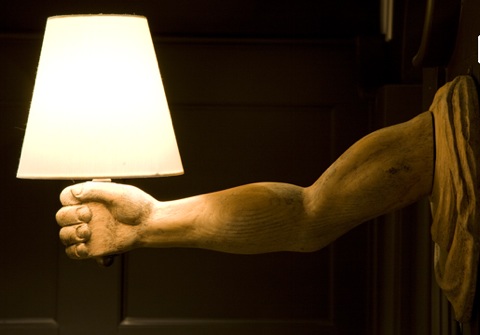 Curiosity dealer Blackman Cruz is selling a pair of stately arm sconces carved from wood. (Thanks, Michael-Anne Rauback!) |
| You are subscribed to email updates from Boing Boing To stop receiving these emails, you may unsubscribe now. | Email delivery powered by Google |
| Inbox too full? | |
| If you prefer to unsubscribe via postal mail, write to: Boing Boing, c/o Google, 20 W Kinzie, Chicago IL USA 60610 | |
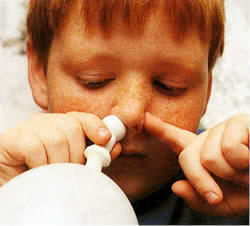 The balloon helps a kid put air pressure on their eustachian tubes from the pharynx, which opens them and helps keep the middle ear drained. Us grownups do the same thing easily by just closing our eyes, holding our noses and "pushing", like on air trips or while driving in mountains or scuba diving. But try to explain that push to a little kid!
The balloon helps a kid put air pressure on their eustachian tubes from the pharynx, which opens them and helps keep the middle ear drained. Us grownups do the same thing easily by just closing our eyes, holding our noses and "pushing", like on air trips or while driving in mountains or scuba diving. But try to explain that push to a little kid! 




 ITZBEEN Baby Care Timer was invented by a new mom and dad who found themselves sleep-deprived and needing help to remember baby care details like when their baby last ate or napped. They tried charts and journals but thought there had to be a better way, so they invented one. And alas, ITZBEEN was born. The ITZBEEN Baby Care Timer is a multi-purpose tool that helps you remember the basic details of baby care. It has four timers for changing, feeding, napping and more that count up with the touch of a button! The ITZBEEN has several other helpful features including a nursing reminder switch that easily reminds mom which side baby nursed from last, a soft-glow nightlight to help parents find their way in the dark without waking the baby and a backlit display so parents can read the times and the clock in the dark.
ITZBEEN Baby Care Timer was invented by a new mom and dad who found themselves sleep-deprived and needing help to remember baby care details like when their baby last ate or napped. They tried charts and journals but thought there had to be a better way, so they invented one. And alas, ITZBEEN was born. The ITZBEEN Baby Care Timer is a multi-purpose tool that helps you remember the basic details of baby care. It has four timers for changing, feeding, napping and more that count up with the touch of a button! The ITZBEEN has several other helpful features including a nursing reminder switch that easily reminds mom which side baby nursed from last, a soft-glow nightlight to help parents find their way in the dark without waking the baby and a backlit display so parents can read the times and the clock in the dark. 

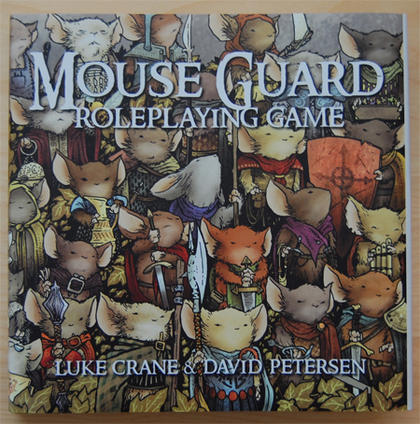
No comments:
Post a Comment